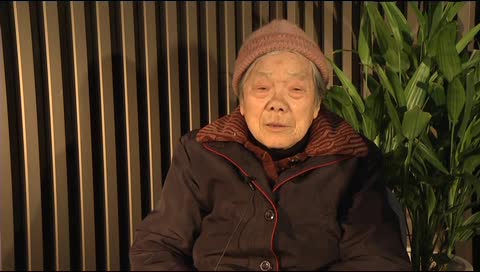Women’s resistance in Nanjing: Reflections from 2020 Lev Student Research Fellow Lucy Sun

From visiting family in China during summer breaks growing up, I became acutely aware of the devastation and suffering that occurred during the Japanese occupation of our hometown of Nanjing. Museums, movies, television programs, and commemorative art kept the Nanjing Massacre alive in public memory. But what I also noticed, from visits to museums, shuffling through television channels, and discussions with family, was the seeming absence of Chinese resistance. So, when I took Professor Wolf Gruner’s “Resistance to Genocide” seminar in Fall 2019, I decided to embark on a project to unearth the experiences of Nanjing women and to research Chinese women’s resistance during the Nanjing Massacre.
I was immediately disappointed by the lack of Nanjing Massacre scholarly literature dedicated to women — much less any specifically on women’s resistance — and nearly convinced myself that perhaps this meant that there was simply nothing to be written about this subject. Then Professor Gruner recommended that I explore the USC Shoah Foundation Visual History Archive’s survivor testimonies. When I did so, I learned that there were over 100 testimonies from Nanjing Massacre survivors. These testimonies, I would soon discover, are over 100 stories, 100 intimate glimpses, into the lives of Chinese men and women during the Nanjing Massacre that reexamine the popular narrative of passive Chinese suffering. These Chinese men and women reveal a diverse and wide range of strategies they utilized to protect themselves, and their family, friends, and strangers, from the threat of sexual violence and murder. Some of the resistance activities by women were so widespread and methodical that it is puzzling that they have not become points of more extensive research. For example, in the testimonies, almost every woman discusses boiling a pot and rubbing the soot on her face to evade the attention of Japanese soldiers. This is just one example. Since there is so little scholarship on individual Chinese resistance, these testimonies became essential to my own research, guiding its trajectory. Now they have inspired me to pursue a senior thesis on Chinese women’s resistance to the threat of sexual violence during the Nanjing Massacre.
It is difficult to select a woman’s story to share as an example, because each is incredibly moving, especially as it is retold by the woman herself. So, I will share the first testimony that I watched, which showed me how insightful the testimonies can be:
Zhang Xiuhong was 11 when her family’s home was set on fire by Japanese soldiers the day after they arrived in her village. “People like us who did not have money, who could not even afford to eat, how could we flee?” she recalled. Without a home, Zhang Xiuhong dug a ditch, lined its bottom with straw, climbed into it and covered herself with more straw. She would sleep there for numerous nights to hide from soldiers. Eventually, she hid in a large straw pile she shared with many other girls. When one of the little girls was discovered to be inside the pile, a Japanese soldier grabbed a bayonet and struck it into the straw. While the other girls panicked and ran out of the straw pile, Zhang Xiuhong stayed inside, sitting and waiting, until the soldiers went off to chase the running girls. Next, Zhang Xiuhong remembered hiding in a boat with other girls; she said, “The Japanese were afraid of water.” But when the soldiers on land finally spotted a girl hiding on the boat, they took their machine guns and shot at the river’s direction. Zhang Xiuhong avoided the bullets, because as soon as the soldiers had raised their guns, she immediately tumbled into the water. Of the 70 or 80 girls who hid on the boats, she remembered, only three others survived; they had jumped into the water after noticing the soldiers’ guns and swam to shore as well. Unable to hide anywhere else, Zhang Xiuhong cut her hair off and dressed in boys’ clothing every day. With her new disguise, she was mistaken for a boy by Japanese soldiers, who often forced young boys to haul their items. Until the end of Japanese occupation, Zhang Xiuhong carried guns and other items for the soldiers. She survived, but she did not dare to grow her hair back until she was 17, six years later.
Zhang Xiuhong’s testimony was eye-opening. After watching such a detailed and emotional interview, I felt compelled to dive further into the Visual History Archive, and I soon learned that her experiences of hiding, disguising, and evading Japanese soldiers were not uncommon. Amongst many women there was an extraordinary motivation to pursue methods of individual and communal self-preservation. Just as the testimonies have given me a new perspective, I hope, and believe, that these testimonies can help challenge traditional narratives and inspire new innovative research on Nanjing men and women.